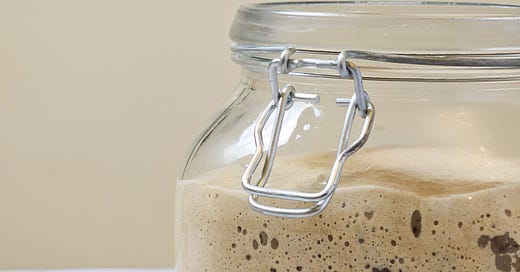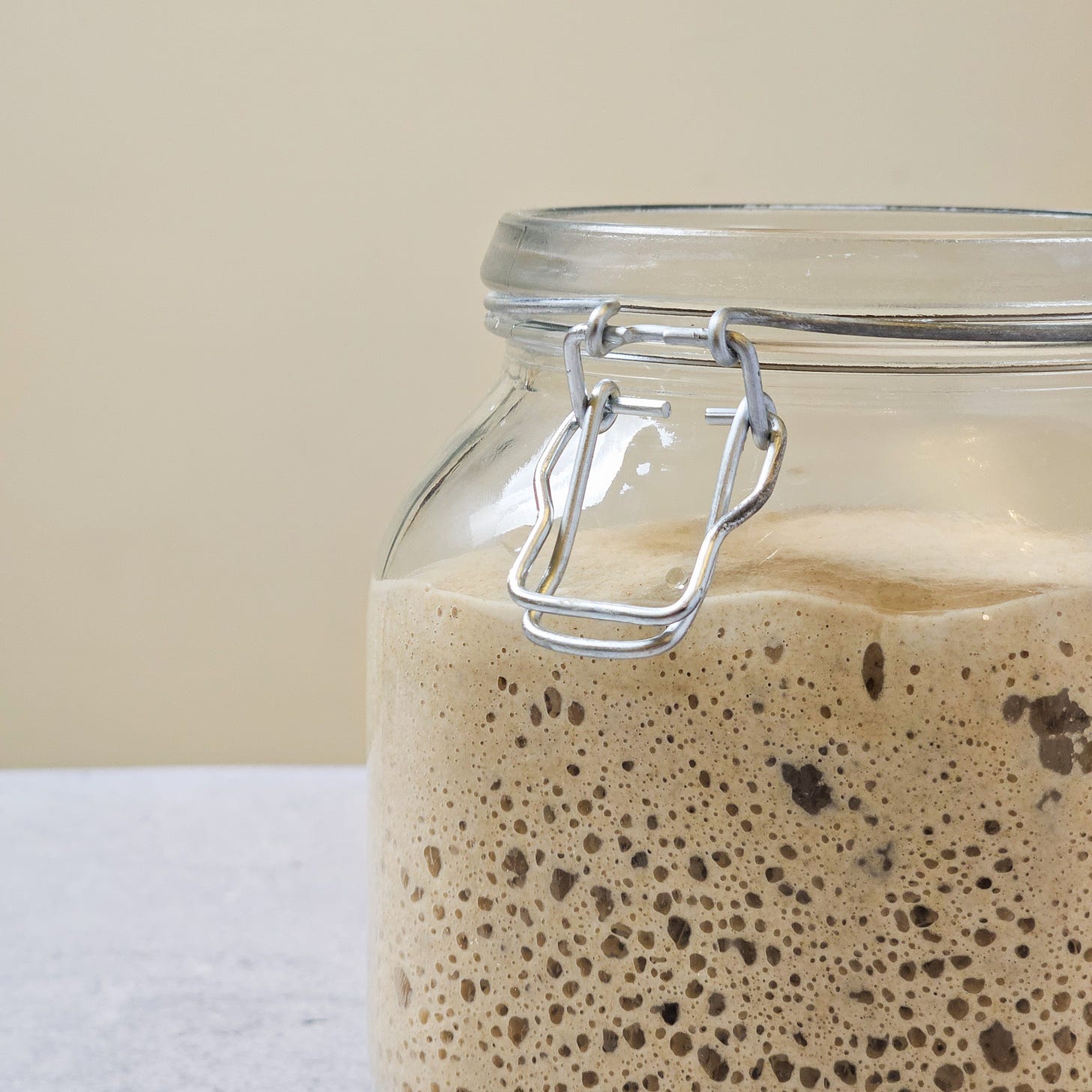Sourdough Starter Explained
Discover the role of living culture in crafting unique flavors in bread and authentic kvass
Sourdough starter is a living, symbiotic community of wild yeast and lactic acid bacteria (LAB) that together create a unique, dynamic culture. This natural fermentation process not only leavens bread but also imparts the distinct tangy flavor and aroma that define sourdough. The diverse strains of bacteria and yeast in each starter contribute to its individuality, shaped by the local environment and ingredients. Moreover, authentic kvass, a traditional fermented beverage, can only be made with sourdough starter, which provides the necessary acidity and depth of flavor.
A sourdough starter is a mixture of flour and water that undergoes fermentation by wild yeast and lactic acid bacteria (LAB). The specific strains of LAB in a sourdough starter can vary depending on the local environment and the ingredients used. Common strains include:
Lactobacillus brevis
Lactobacillus sanfranciscensis
Lactobacillus plantarum
Streptococcus lactis
In addition to LAB, sourdough starters also contain various yeast species, such as:
Saccharomyces cerevisiae
Candida milleri
Candida humilis
Candida rugosa
Saccharomyces cerevisiae is particularly important as it drives much of the yeast-mediated fermentation, producing carbon dioxide that causes the dough to rise.
Geographic and Evironmental Influences on Sourdough Starter Composition
The specific strains of lactic acid bacteria (LAB) in a sourdough starter are profoundly influenced by a variety of factors, including geographic location, climate, and the types of flour and water used. Each environment harbors its own unique microbial ecosystem, meaning that LAB strains can vary significantly from one region to another. For example, a starter created in a coastal region may harbor different LAB strains compared to one cultivated in a mountainous area, due to variations in humidity, temperature, and air quality. This environmental diversity extends to the ingredients used; for instance, rye flour often promotes the growth of different LAB strains, such as Lactobacillus reuteri and Lactobacillus fermentum, compared to wheat flour, which may encourage Lactobacillus sanfranciscensis and Lactobacillus brevis.
In addition to geographic and environmental factors, the type of grain and milling process used also play a role in shaping the microbial composition of the starter. Local agricultural practices and ingredient availability can further influence the LAB and yeast profiles, contributing to the distinct flavors and characteristics of sourdough starters. These bacteria and yeast work together to ferment the carbohydrates in the flour, producing lactic acid, acetic acid, and other compounds that give sourdough its unique flavor and texture. The exact combination of yeast and bacteria can differ significantly from one starter to another and can even evolve over time within the same starter
This regional variation ensures that each sourdough starter is a unique reflection of its geographical and environmental context, contributing to the diverse array of flavors and qualities found in sourdough bread and kvass across different regions.
How It Works
LAB, such as Lactobacillus sanfranciscensis, Lactobacillus brevis, Lactobacillus plantarum, and Leuconostoc species, are typically found on the surface of grains and flour.
Enzymes play a crucial role in the sourdough bread-making process, particularly during autolysis—a process where enzymes naturally present in flour are activated when combined with water. This process begins breaking down the starches and proteins in the flour.
During autolysis, the flour and water mixture is left to sit for several hours, allowing enzymes like amylase to break down complex carbohydrates into simpler sugars. These sugars are more easily metabolized by the LAB, enhancing the bread's flavor and nutritional profile. Additionally, proteins break down into amino acids, contributing to the bread's flavor and texture.
LAB primarily consume simple sugars and starches, producing lactic acid and other organic acids during fermentation. They also break down proteins, albeit less efficiently, leading to the production of amino acids that enhance the bread's flavor. As fermentation progresses, the intensity of umami increases due to the decomposition of proteins.
Kvass Fermentation
In kvass fermentation, the bacteria and yeast in a sourdough starter play a crucial role in transforming the simple mixture of water, toasted rye bread, sugar, and sometimes added fruit, into a tangy, slightly effervescent beverage. The primary fermentation in kvass is lactic acid fermentation, driven by lactic acid bacteria (LAB) such as Lactobacillus brevis and Lactobacillus plantarum. These bacteria convert sugars into lactic acid, which gives kvass its signature sourness — a defining characteristic of the drink. While yeast, particularly Saccharomyces cerevisiae, plays a vital role by consuming sugars from the bread and any added fruit to produce carbon dioxide and a small amount of alcohol, the main fermentation process is dominated by LAB. This lactic acid fermentation ensures that kvass develops the proper level of acidity and depth of flavor. When fruit is added, it provides additional sugars that both the yeast and LAB ferment, enhancing the complexity of the drink. To achieve the true, sour profile of authentic kvass, it must be made with a sourdough starter that combines both LAB and yeast, rather than relying solely on yeast fermentation.
The unique characteristics of sourdough bread and kvass are deeply rooted in the intricate interplay between wild yeast and lactic acid bacteria present in a sourdough starter. This symbiotic community not only imparts distinctive flavors and textures but also reflects the environmental conditions and ingredients from which it originates. Authentic kvass, often misunderstood as a yeast-only beverage, relies on the essential role of both LAB and yeast to achieve its traditional sourness and complexity. By understanding the geographic influences on LAB and yeast strains and the vital role of lactic acid fermentation, we can better appreciate the diverse and rich profiles of these beloved fermented products. Each starter is a testament to its unique origins, showcasing the art and science of fermentation that continues to captivate and delight.
Creating your own sourdough starter is easy with this simple guide:
connect with us on Instagram:
Denis Pashkov
cosmos society






